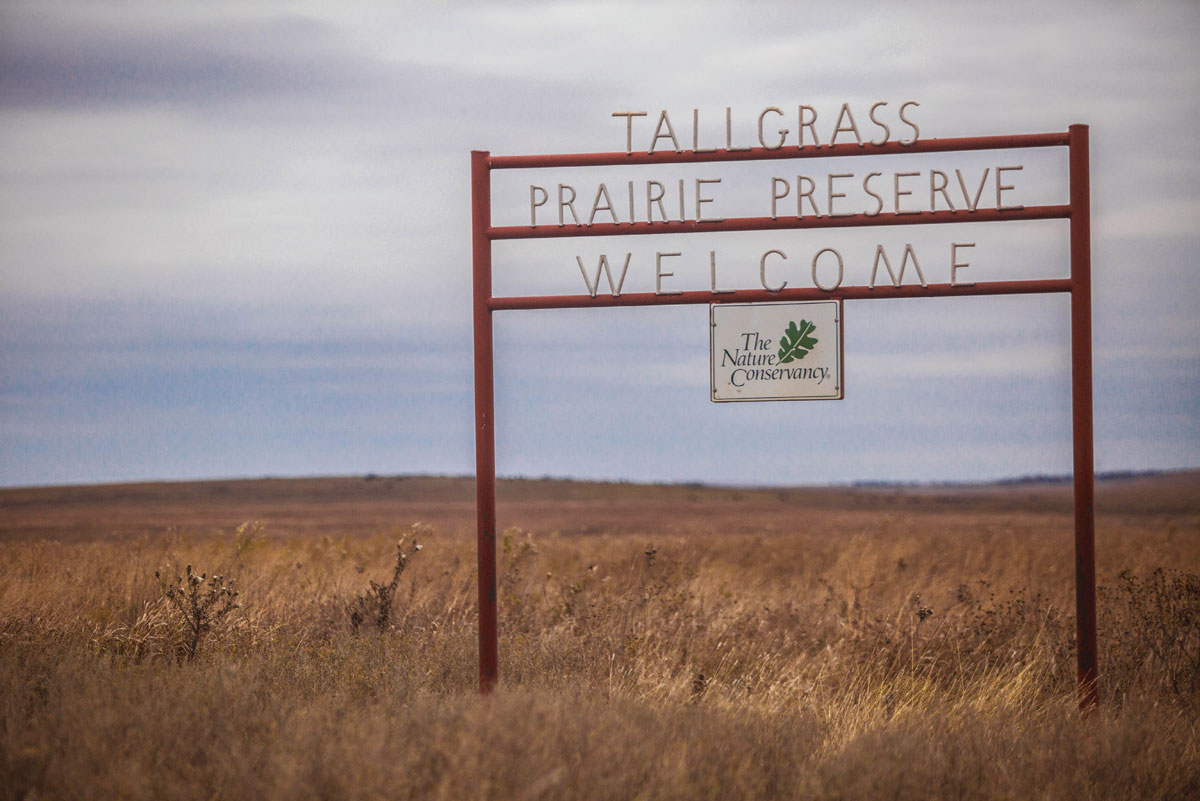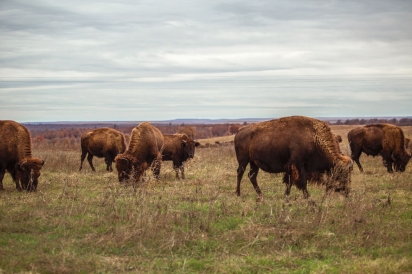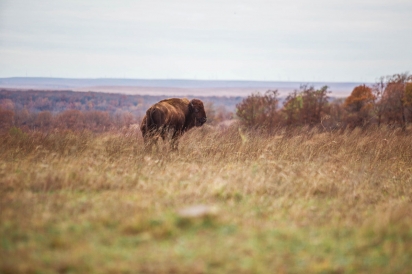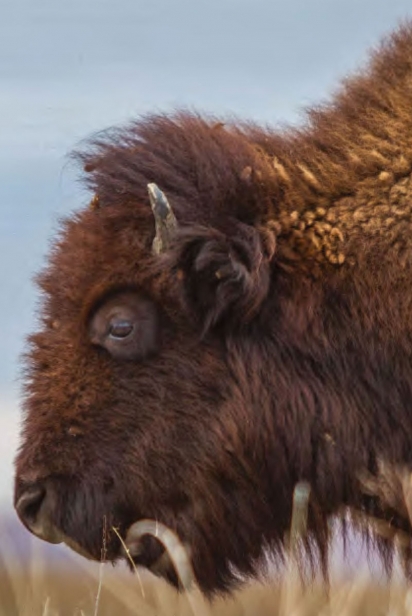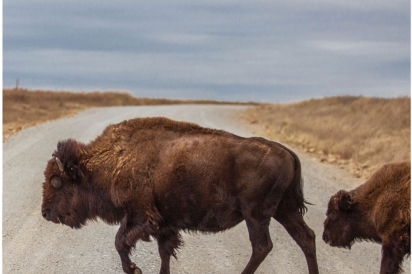Home, Home on the Preserve
I can’t believe this will only be my second time to visit the Joseph H. Williams Tallgrass Prairie Preserve located near Pawhuska. For someone who has lived at least two decades of his life in the Tulsa area, this is not only a mistake, but also an embarrassment. I’ve decided to take the slightly longer route around Skiatook Lake on Highway 11. Between fall finally showing up and an obsession with old drilling towns in Oklahoma, I rarely opt for the major highways.
People who think that Oklahoma is completely flat will have a major perspective change as soon as they leave the comfortable Tulsa terrain. I pass a row of eight or more cyclists charging a major incline. My RPMs climb and my old wagon groans as I finally plateau only to begin an instant descent at the peak.
Violent red sumac lines both sides of the street and the oaks have finally blanketed the road with the last of their golden gloves. The creeks look like postcards and the deer are nowhere to be seen, hoping to make it to March without any brushes with arrow or lead.
Every town we pass seems to have the same formula: a post office, three churches, a few abandoned buildings, one bar and a hamburger spot that has served the same 20 people lunch for the last 20 years. I can’t help but wonder how these towns sustain themselves.
After an hour of driving, the landscape changes dramatically. Trees scatter to the far edges of the earth; straw-colored grasses grow taller than giants and the sky’s infinite wingspan becomes visible. There are no buildings or any anthropocentric structures to shield, hide or measure things by, only a memory of a West that was wild and vast.
We crawl over no less than seven cattle guards as we pass through the preserve. Signs are posted at each one making sure that each visitor knows that bison are not puppies and shouldn’t be treated as such
The preserve has over 2,000 of these magnificent animals in their herd and the larger males can push 2,500 pounds in weight, the largest on record weighed 2,800 pounds. The herd is allowed to move freely over 25,000 acres, so it’s not uncommon to have to put your car in park as a group of 100 or more cross the gravel road at their leisure.
When most of us think of endangered ecosystems, we usually imagine rain forests being clear-cut or coral reefs being smothered and suffocated. Both of which are incredibly far from Oklahoma, and more than likely systems that only a few of us will ever physically lay eyes on. A generation ago, the fertile soil and tall grasses of the prairie covered much of North America. Fourteen states boasted thousands of acres of these rolling grasslands and now less than 4% of this habitat is intact. It is listed as one of the most endangered ecosystems in the world, and it’s quietly taking its last breaths in our backyard.
I wonder if we’re aware of how powerful our food choices are. I sometimes worry that we can walk into a “Buy-N-Large,” purchase conventional vegetables grown in Mozambique, a 24-pack of cheese food slices and some trans-fat spread product and never even have to think about the collateral of those decisions. The decimation of prairie land is a direct result of our thoughtless food consumption.
We decided a long time ago that cheap potatoes are a much more important investment than diversity and ecosystem preservation. Huge swaths of monoculture and specialized agriculture make up over 230 million acres of former grasslands. When the first plantings of these single-crop farms ravished all the nutrients from the most fertile soil in the world, then came the inventions of chemicals in the forms of pesticides and fertilizers that permanently crippled America’s heartland.
Now the damage is so thorough that even telling the story of the prairie of old becomes a challenge. It took the retreat of glaciers thousands of years ago to form the grasslands of America, and give it the highest recorded depth of organic matter anywhere in the world, and less than a century for it to have its veins completely severed by the plow of monoculture.
We have to look hard for stories of restoration. We are inundated with despair and news that leaves us shaking our heads. I have found that April on the prairie is the greatest image of hope and healing the world has offered me yet. Newborn bison can be seen romping through wildflowers and spring colors get haphazardly Pollocked throughout the landscape.
I watch bison move as they wish, unguided and unaltered. I’m thrown into a state of wonder. Perfectly shaped hooves till the ground, paving the way for the new growth of old species. Hawks sickle through the sky looking for any sign of field mice in the acres below, and the hundreds of plants and trees begin to raise their heads after a long winter’s sleep—the noise of a world becoming wild again.
Sidebar: The Joseph H Williams Tallgrass Prairie Preserve is is owned and operated by The Nature Conservancy, a non-profit conservation organization. The preserve is the largest (39, 000 acres) protected remnant of tallgrass prairie left on earth. Originally spanning portions of 14 states from Texas to Minnesota, urban sprawl and conversion to cropland have left less than 10% of this magnificent American landscape. Since 1989, the Conservancy has proven successful at restoring this fully-functioning portion of the tall grass prairie ecosystem with the use of about 2500 free-roaming bison and a “patch-burn” model approach to prescribed burning. The preserve is open every day from dawn to dusk with no charge for admittance and can be accessed via county roads. There are free ranging bison herds, scenic turnouts, hiking trails, picnic tables, breezeway information and public restrooms at the Historic Bunkhouse. The gift shop / visitor center is open from March I though December 15 from 10:00am to 4:00pm. It is operated by docents, and is typically open every day.
Reprinted from www.Nature.org/tallgrass


